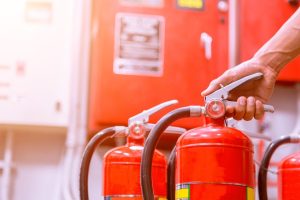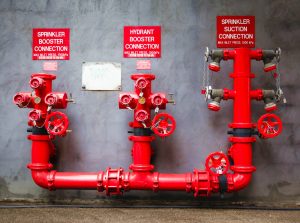Fire Protection
When it comes to fire safety and protection, at your property or business, there is no one size fits all approach.
When you trust Fire Safe ANZ with your fire protection, we can create a customised approach to fire protection to suit your needs. This involves meeting all fire and electrical safety requirements for your property, in a variety of pricing models to meet your budget.
We can also arrange one of our technicians or project managers to visit your property to ascertain what type of fire procedures are required for your property.
- Fire Extinguishers
- Fire Hose Reels
- Fire Doors
- Fire Indicator Panels & EWIS
- Fire Sprinkler Systems
- Fire Hydrant Systems
- Emergency Lighting Systems
- Testing and Tagging
- Residual Current Devices
- Thermal Imaging
- Fire Procedures in the Workplace
- Annual Fire Safety Statements
Fire Extinguisher
Depending on the nature of your business, various types of fire extinguishers can be placed around your business to provide you with a first line of defence in the case of a fire.
There are five types of fire extinguishers:
- Water Fire Extinguishers;
- Wet Chemical Fire Extinguishers;
- Foam Fire Extinguishers;
- Powder ABE Fire Extinguishers and
- CO2 Fire Extinguishers.
Fire Hose Reels
Fire Hose Reels enable coverage of a building in the case of a Class A fire (paper, wood, rubbish and plastics).
Connected to the mains water supply and generally situated at the building exit, fire hose reels provide a minimum of 0.33L of water per second in the event of a fire.
Fire Doors
Fire and smoke doors are designed to compartmentalise a fire and prevent it from spreading. Fire doors require specialised locking systems to allow occupants to easily escape in the event of an emergency.
Fire Indicator Panels
A Fire Indicator Panel (FIP) is the brain of your fire alarm system, taking action based on information received from environmental sensors, such as heat or smoke. The FIP can then set off audible or visual alarms to warn building occupants of danger.
An Emergency Warning and Intercommunication System (EWIS) works with your FIP to encourage orderly evacuation from your building. While the FIP provides the audible and visual alarms, the EWIS provides a verbal broadcast and enables trained fire wardens to communicate via Warden Intercommunication Points.
Fire Sprinkler Systems
A fire sprinkler system is an active fire suppression system that provides a detection function and automatic dousing of a fire. Sprinkler systems require a constant water pressure supply to ensure correct activation and need to be regularly serviced and tested for correct function in the event of a fire.
Fire Hydrant Systems
Fire hydrant pump systems (also known as fire pumps, hydrant boosters, fire water pumps) provide the most effective means of manual fire suppression when controlled by Fire Brigade personnel. Availability of fire hydrants is essential to fire protection. Fire hydrants may be used to control the spread of a fire, protect neighbouring properties and extinguish an outbreak of fires. The fire hydrant systems are access points that allow fire authorities to connect hoses and quickly disperse large amounts of water to extinguish flames.
Emergency Lighting Systems
In the event of a fire emergency, people can easily become disoriented by thick smoke and subsequent power outages. Emergency Lighting Systems provide your property with clear, illuminated lighting highlighting the path of travel to the exits and signs over exit doors, which will help people to evacuate even when the mains power has gone out.
Testing and Tagging
Routine inspection and electrical testing is important to ensuring the safety of all building occupants who may use electrical equipment.
Many faults can arise from unkempt or unchecked electrical equipment, including frayed leads, “Daisy Chained” power boards, even just old adapters, and power boards that fail “Push Button” and “Trip Time” tests.
Routine inspection and testing can detect damage and ensure correct function of your electrical equipment.
Residual Current Devices
Residual Current Devices, also commonly referred to as RCD’s, automatically cut off electricity if their sensor is set off by a fault, such as an irregularity in the electric current flow.
Thermal Imaging
Thermography testing is a diagnostic procedure that detects abnormal temperature variations, which are often a result of circuits overloading or loose wiring.
Early detection of these issues by thermography can correct issues in a timely manner, avoiding further issues and large-scale problems down the track.
Fire Procedures in the Workplace
In the event of a fire emergency, emergency management procedures are vital to extinguishing the fire before it spreads, setting off relevant alarms and guiding building occupants safely and orderly out of the building.
Annual Fire Safety Statements
A fire safety statement is a document issued by or on behalf of the owner(s) of an existing building.
The statement confirms that an accredited practitioner (fire safety) has assessed, inspected and verified the performance of each fire safety measure that applies to the building.
An annual fire safety statement must be issued each year and include all the essential fire safety measures that apply to a building. The statement also verifies that an accredited practitioner (fire safety) has inspected and confirmed that the exit systems in the building are in compliance with the Regulation.
GET IN TOUCH TODAY
"*" indicates required fields












